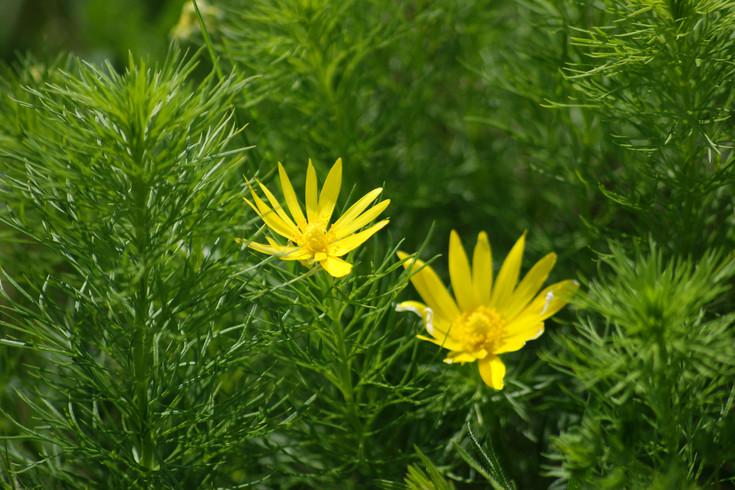This project, funded by the Biodiversity Fund is concerned with surveying the genetic diversity of steppe plants in Austrian dry habitats as a basis for recording future trends.
Duration: 01.01.2024-31.10.2025
The random fluctuation of allele frequencies (genetic drift) can have a significant impact on evolution in small and fragmented populations and lead to an extinction vortex, a feedback loop between reduced population size, loss of genetic diversity and inbreeding. Since dry meadows and pastures in Austria are among the most species-rich habitats, but also among the most endangered due to changes in land use, we selected 14 rare "steppe plants" with occurrences in the Pannonian and partly also in the Alpine region for the survey of the state of genetic diversity: Artemisia pancicii; Astragalus exscapus; Crambe tataria; Dianthus serotinus; Dracocephalum austriacum; Iris humilis subsp. arenaria; Adonis vernalis; Phlomoides tuberosa; Carex supina; Linum flavum; Onobrychis arenaria; Oxytropis pilosa; Stipa capillata; and Pulsatilla grandis, P. oenipontana and P. vulgaris (species group).
For the molecular genetic characterization of the populations and for a corresponding (long-term) comparison of genetic diversity (heterozygosity, gene flow, inbreeding), the occurrences are to be genotyped using RADseq. We expect that the data will provide valuable information for assessing the conservation status of the species themselves, but also of the habitats in which they occur. The data can be valuable as a basis for conservation decisions. For example, it can be used to assess which protected areas are characterized by high or low genetic diversity, what connections exist between protected areas or what contribution species conservation projects make to the preservation of genetic diversity.
The project supports Austria's efforts as a party to the Convention on Biological Diversity to establish a national system for monitoring the status and development of biodiversity and its components by collecting data for indicator S.3.1 (status of genetic diversity of wild species) throughout Austria using a standardized design.
As remnants of the historical, traditionally extensively farmed cultural landscape, many protected areas are only scattered over small areas in a landscape that is mostly used very intensively today. This applies above all to nature reserves (NSG) or natural monuments (ND) in the lowlands and hills or Alpine valleys, some of which were established because of the presence of individual species, such as the now 3.2 ha "large" (already expanded!) Zeiserlberg NSG with the only Austrian occurrence of the Tátorján sea kale (Crambe tataria - see Fig. 1). A central aim of the project is to record and verify the fulfilment of the purpose of selected protected areas with regard to the conservation of their genetic intraspecific diversity. The genetic data collected will for the first time provide information on how well existing protected areas protect or "represent" the genetic diversity of steppe plants in Austria and aid the designation of nature conservation measures for the preservation/support of genetic diversity.
In particular, species conservation projects (including reintroduction projects) and nature conservation measures in general will be examined with regard to their effectiveness. The following questions are of interest: What are the benefits of the management measures with regard to the genetic diversity of the target species? How important is the conservation of primary sites compared to newly established secondary sites? Can lost diversity be restored? Example: The Zeiserlberg nature reserve (municipality of Ottenthal, Lower Austria) has been a joint project and a matter close to the hearts of the Zoological-Botanical Society and the municipality of Ottenthal for decades. The annual joint maintenance work at the only Austrian site where the Tátorján sea kale (Crambe tataria) is found in the Zeiserlberg nature reserve has successively increased the number of individuals. Positive effects on genetic diversity are to be expected.



